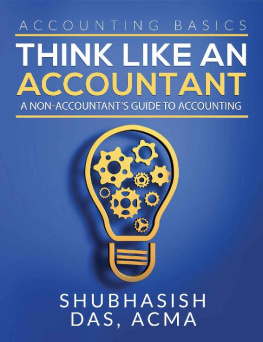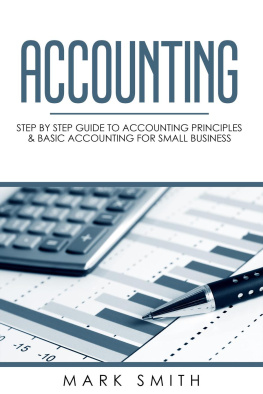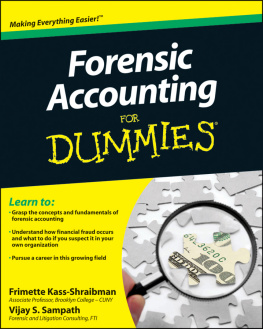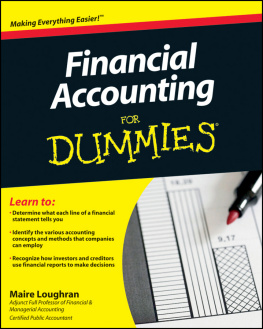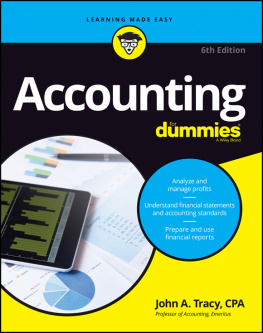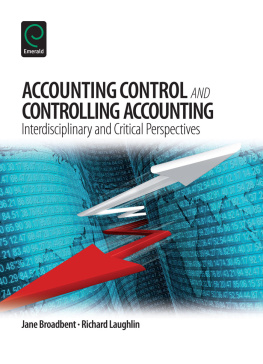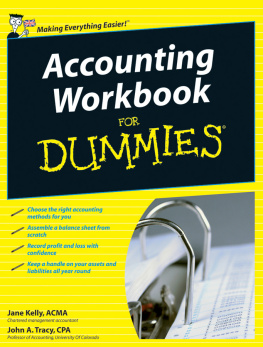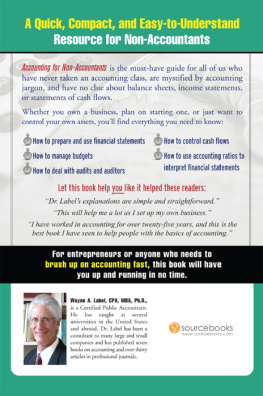CMA Shubhasish Das - ACCOUNTING BASICS- THINK LIKE AN ACCOUNTANT: A non-accountants guide to accounting, Beginner’s handbook (Accounting for Dummies)
Here you can read online CMA Shubhasish Das - ACCOUNTING BASICS- THINK LIKE AN ACCOUNTANT: A non-accountants guide to accounting, Beginner’s handbook (Accounting for Dummies) full text of the book (entire story) in english for free. Download pdf and epub, get meaning, cover and reviews about this ebook. genre: Children. Description of the work, (preface) as well as reviews are available. Best literature library LitArk.com created for fans of good reading and offers a wide selection of genres:
Romance novel
Science fiction
Adventure
Detective
Science
History
Home and family
Prose
Art
Politics
Computer
Non-fiction
Religion
Business
Children
Humor
Choose a favorite category and find really read worthwhile books. Enjoy immersion in the world of imagination, feel the emotions of the characters or learn something new for yourself, make an fascinating discovery.
- Book:ACCOUNTING BASICS- THINK LIKE AN ACCOUNTANT: A non-accountants guide to accounting, Beginner’s handbook (Accounting for Dummies)
- Author:
- Genre:
- Rating:5 / 5
- Favourites:Add to favourites
- Your mark:
ACCOUNTING BASICS- THINK LIKE AN ACCOUNTANT: A non-accountants guide to accounting, Beginner’s handbook (Accounting for Dummies): summary, description and annotation
We offer to read an annotation, description, summary or preface (depends on what the author of the book "ACCOUNTING BASICS- THINK LIKE AN ACCOUNTANT: A non-accountants guide to accounting, Beginner’s handbook (Accounting for Dummies)" wrote himself). If you haven't found the necessary information about the book — write in the comments, we will try to find it.
If your dream is to become an accounting professional, and you are FEELING HOPELESS because you find accounting difficult, THIS BOOK CAN CHANGE YOUR LIFEThis book is for you if:
Accounting is simple to understand if you master the thinking process required for accounting.
I have seen students struggling in advance stages of accounting, i have seen working professionals facing difficulty to understand advance concepts and i have been a victim myself. This is because we lack clarity in the fundamentals. It is rare to find an accounting book which is focused on building basic thinking skills required to do accounting.This book doesnt dive deep into the advance accounting but it takes you back to the very foundations of accounting.
HOW THE CONTENT IS ARRANGED
After reading this book, you will develop below skills
IF YOU ARE HAPPY WITH THIS PURCHASE- PLEASE WRITE A REVIEW
ABOUT THE AUTHOR: Shubhasish Das is a leading management accountant, mentor and author. Visit shubhasishdas.com for more information. For accounting and finance apps visit innovating.in
CMA Shubhasish Das: author's other books
Who wrote ACCOUNTING BASICS- THINK LIKE AN ACCOUNTANT: A non-accountants guide to accounting, Beginner’s handbook (Accounting for Dummies)? Find out the surname, the name of the author of the book and a list of all author's works by series.

